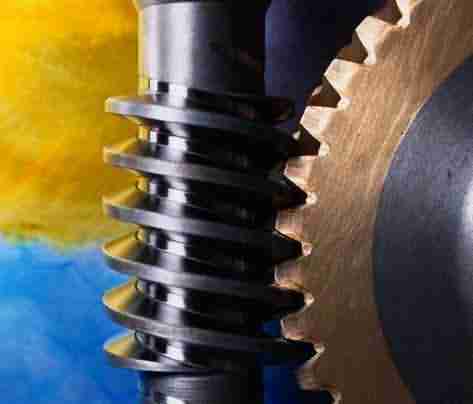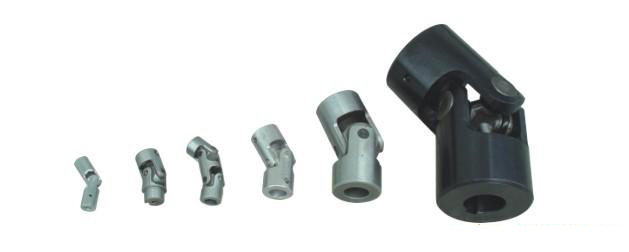GEAR
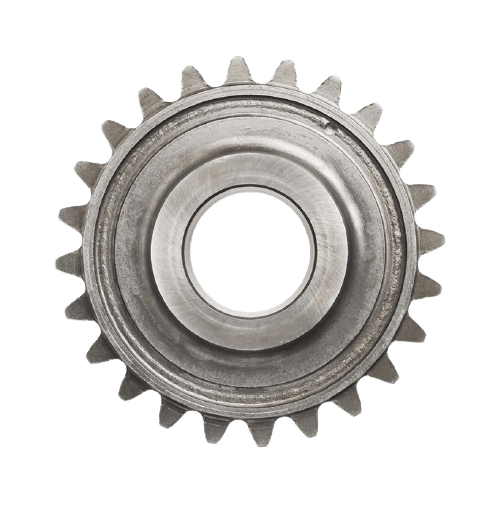
-
PLANET CARRIER
-
RING GEARS
-
Ever-power produce all kinds of helical ring gears
-
Differential Gears
-
Spur gears and Helical gears
-
WORM GEARS & WORMS
-
Bevel Gears and Spiral Bevel gears
-
Bras de couple
-
Universal Joints
-
Assemblage de l'articulation de direction
-
Arbre d'entraînement de l'industrie
-
Trcuk driveline / Transmission shaft for Trucks
Spur Gears
The most common type of gears employed, spur gears are constructed with straight teeth cut or inserted parallel to the gear’s shaft on a circular (i.e., cylindrical) gear body. In mated pairs, these gears employ the parallel axes configuration to transmit motion and power. Depending on the application, they can be mated with another spur gear, an internal gear (such as in a planetary gear system), or a gear rack (such as in a rack and pinion gear pair).
The simplicity of the spur gear tooth design allows for both a high degree of precision and easier manufacturability. Other characteristics of spur gears include lack of axial load (i.e., the thrust force parallel to the gear shaft), high-speed and high-load handling, and high efficiency rates. Some of the disadvantages of spur gears are the amount of stress experienced by the gear teeth and noise produced during high-speed applications.
This type of gear is used for a wide range of speed ratios in a variety of mechanical applications, such as clocks, pumps, watering systems, power plant machinery, material handling equipment, and clothes washing and drying machines. If necessary for an application, multiple (i.e., more than two) spur gears can be used in a gear train to provide higher gear reduction.
Helical Gears
Similar to spur gears, helical gears typically employ the parallel axes configuration with mated gear pairs, but, if aligned properly, they can also be used to drive non-parallel, non-intersecting shafts. However, unlike spur gears, these gears are constructed with teeth which twist around the cylindrical gear body at an angle to the gear face. Helical gears are produced with right-hand and left-hand angled teeth with each gear pair comprised of a right-hand and left-hand gear of the same helix angle.
The angled design of helical teeth causes them to engage with other gears differently than the straight teeth of spur gears. As properly matched helical gears come in contact with one another, the level of contact between corresponding teeth increases gradually, rather than engaging the entire tooth at once. This gradual engagement allows for less impact loading on the gear teeth and smoother, quieter operation. Helical gears are also capable of greater load capabilities but operate with less efficiency than spur gears. Further disadvantages include the complexity of the helical tooth design, which increases the degree of difficulty in its manufacturing (and, consequently, the cost) and the fact that the single helical gear tooth design produces axial thrust, which necessitates the employment of thrust bearings in any application which uses single helical gears. This latter necessity further increases the total cost of using helical gears.
|
Type of Gear |
Characteristics |
|
Spur |
|
|
Helical |
|
|
Bevel |
|
|
Worm |
|
|
Rack and Pinion |
|
Bevel Gears
Bevel gears are cone-shaped gears with teeth placed along the conical surface. These gears are used to transmit motion and power between intersecting shafts in applications which require changes to the axis of rotation. Typically, bevel gears are employed for shaft configurations placed at 90-degree angles, but configurations with lesser or greater angles are also manageable.
There are several types of bevel gears available differentiated mainly by their tooth design. Some of the more common types of bevel gears include straight, spiral, and hzpt bevel gears.
Straight Bevel Gears
The most commonly used of the bevel gear tooth designs due to its simplicity and, consequently, its ease of manufacturing, straight bevel teeth are designed such that when properly matched straight bevel gears come into contact with one another, their teeth engage together all at once rather than gradually. As is the issue with spur gears, the engagement of straight bevel gear teeth results in high impact, increasing the level of noise produced and amount of stress experienced by the gear teeth, as well as reducing their durability and lifespan.
Spiral Bevel Gears
In spiral bevel gears, the teeth are angled and curved to provide for more gradual tooth engagement and more tooth-to-tooth contact than with a straight bevel gear. This design greatly reduces the vibration and noise produced, especially at high angular velocities (>1,000 rpm). Like helical gears, spiral bevel gears are available with right-hand or left-hand angled teeth. As is also the case with helical gears, these gears are more complex and difficult to manufacture (and, consequently, more expensive), but offer greater tooth strength, smoother operation, and lower levels of noise during operation than straight bevel gears.
Pourquoi nous choisir ?
(1) Nous fournissons des services OEM et soumettons aux clients différents styles et les dernières conceptions ;
(2) Nous coopérons avec des clients importants en Asie du Sud-Est, en Afrique, au Moyen-Orient, en Amérique du Nord et en Amérique du Sud ;
(3) En fonction des besoins des clients dans les différentes régions, nous avons adapté différents styles de réducteurs pour vous, afin que nos clients soient très compétitifs sur le marché !
(4) Nous avons plus de 20 ans d'expérience dans la fourniture à nos clients de produits de haute qualité et de services professionnels.
(5) Nous pouvons exporter des marchandises de manière flexible à partir de n'importe quel port en Chine ! N'hésitez pas à vous renseigner !
avantage pour l'entreprise :
1. Grande capacité de production et livraison rapide.
2. Règles strictes de contrôle de la qualité : tous les produits doivent passer l'inspection 100% avant d'être livrés.
3. Fournir un service OEM/ODM
4. Service en ligne 24 heures sur 24.
5. Demande de devis en temps réel
6. Haute qualité, haute fiabilité et longue durée de vie du produit.
7. Les fabricants professionnels proposent des prix compétitifs.
8. Des travailleurs qualifiés, diversifiés et expérimentés.
Système de gestion de la qualité :
HZPT accorde la plus haute priorité à la qualité des produits et des services.
Nos employés reçoivent une formation sur les méthodes et les principes de la qualité.
À tous les niveaux de l'organisation, nous nous engageons à améliorer la qualité des produits et des processus.
Cet engagement profond nous a permis de gagner la confiance des clients et de devenir la marque préférée dans le monde entier.
Emballage et délai de livraison
Taille : Dessins
Caisse/conteneur en bois et palette, ou selon les spécifications du client.
15-25 jours pour les échantillons. 30-45 jours pour les commandes commerciales
Port : Shanghai/Ningbo port
FAQ
QUESTIONS FRÉQUEMMENT POSÉES :
Auprès du client
Les achats en Chine sont-ils rentables ?
La Chine reste l'un des plus grands fournisseurs au monde. Il est certain que les produits que vous avez choisis sont rentables sur vos marchés cibles, car la Chine fournit le monde entier avec une qualité et des prix compétitifs.
2) Dois-je me rendre en Chine pour acheter des produits ?
Nous nous occupons de tout pour vous, ce qui vous permet d'économiser sur les billets d'avion, les hôtels et les frais de voyage. Cependant, si vous décidez de visiter la Chine, nous essaierons de vous organiser un séjour agréable pour que votre expérience de voyage soit plaisante.
3) Quel type de produits fournissez-vous ?
Une large gamme de produits industriels, automobiles et agricoles. Chaque produit est confié à une équipe spécialisée.
4) Quels sont les risques que j'encoure en achetant en Chine ou en travaillant avec vous ?
Vous n'avez pratiquement aucun risque. Nous effectuons les achats pour vous et vous pouvez être rassuré par nos inspections. Si vous avez le temps de venir en Chine, vous pouvez nous rendre visite pendant le processus de production. Vous avez accès à nos réseaux de contacts et à notre équipe de vente. Nous prendrons des mesures sérieuses concernant vos produits comme les nôtres. Vous n'avez pas besoin de voyager si vous ne le souhaitez pas car vous avez des partenaires compétents en Chine.
5) Je peux trouver moi-même le fournisseur de mes produits, pourquoi ai-je besoin de vous ?
Vous pouvez le faire. Cependant, votre investissement sera beaucoup plus élevé. De plus, vous ne disposez pas d'un partenaire local qui connaît le marché et peut vous donner accès à un réseau d'opportunités.
Pour acheter vos produits en Chine, vous devez disposer d'un bureau local pour signer des contrats avec les fournisseurs, d'une équipe d'ingénieurs pour effectuer des contrôles de qualité et de quantité de temps à autre. Vous devez connaître les sources d'approvisionnement en matières premières, et l'important est d'éviter toute sous-traitance.
6) Quelle est votre structure ?
Nous disposons de différents départements, chacun spécialisé dans un domaine particulier. Nous pouvons fournir une assistance logistique, une assistance en matière d'approvisionnement, une assistance en matière d'inspection et une assistance juridique.
7) Ce service est-il réservé aux grandes entreprises ?
Non, nous sommes sûrs que la première fois que vous ferez affaire avec nous, vous obtiendrez une confiance chaleureuse, car notre relation est basée sur l'honnêteté et les avantages mutuels, de sorte qu'à l'avenir, vous élargirez vos affaires. Nous prenons soin de vous et nous vous rendons beaucoup plus fort qu'avant. Ensemble, nous allons de force en force.
Nous accueillons toutes les entreprises, de la plus petite à la plus grande, et nous progressons.
Pour plus d'informations, veuillez nous envoyer un courriel
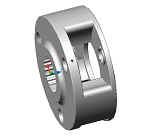

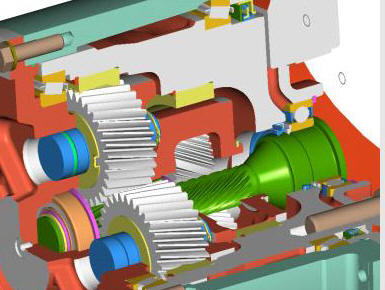

/helica1.jpg)
